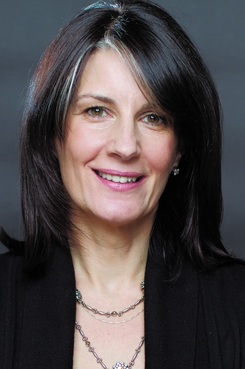Proactive Marketing for the Win—Everyone Should Do It
I tend to think of marketing and business development efforts in four buckets—passive marketing, active marketing, reactive marketing and proactive marketing.
October 28, 2019 at 12:23 PM
7 minute read
 Meg Pritchard.
Meg Pritchard.
Last week, I had the pleasure of sitting in one of the best meetings I've ever attended, with some of the smartest marketing and business development professionals I know (and I'm not just saying that because they're my clients).
The meeting lasted three hours—two solid hours of which were dedicated to brainstorming, innovating and even some (fully encouraged) pie-in-the-sky thinking. The umbrella topic was what the marketing and business development teams should do as their next major project.
This wasn't a one-off meeting either.
Led by the chief client development and marketing officer and her team of functional leads, this department commits a full afternoon once a quarter to talking about bigger-picture projects, opportunities and challenges. Each and every person in those conference rooms—across offices, functions and levels—is responsible not only for finding solutions to identified problems, but also for surfacing opportunities for the department to add value, drive client engagement and impact revenue.
This is proactive marketing at its finest.
I believe everyone should be doing it.
It's not that long ago that the marketing function in professional services industries like the law had a bit of what some have called "an image problem." Rather than being viewed as a core function, marketing (and everything that was stuffed under that large umbrella) was tagged as an expense. Marketing was seen as a cost center and, in rougher times, an unnecessary and expendable drag on the bottom line. Fat that could be trimmed when the budget needed cutting.
The view of (most) law firm leadership has evolved, but there is a long expanse of ground between viewing the marketing function as a cost center and recognizing—and capitalizing on— its potential to drive revenue and profits.
Proactive marketing is essential to getting there.
I tend to think of marketing and business development efforts in four buckets—passive marketing, active marketing, reactive marketing and proactive marketing.
Passive marketing includes anything you put out into the world to explain your brand, who you are and what you do, and to create visibility. Your website, including practice pages and lawyer bios, are an example of passive marketing. So is any informational content that you put out, in a blog, for example, or alerts and newsletters you post on your website. Social media can be passive marketing, even though we think of social media platforms as more active than static websites and blogs, if you're posting content but not interacting with visitors to your pages or accounts. Passive marketing is putting content out to be found by clients and prospects who are looking for you or for the information you're providing. Paying to be a sponsor of an event so that your brand is on display is another form of passive marketing.
Active marketing includes anything you do to reach clients and prospects where they are, rather than waiting for them to come to you. Pushing a client alert electronically to a targeted list of recipients converts passive marketing (developing and posting content on your website) to active marketing (delivering that content to an identified set of folks you believe has an interest in it). Developing and implementing a client interview and feedback program is also a form of active marketing.
Passive marketing and active marketing are complimentary. One is not better than the other, and both have a place in your marketing efforts. Passive also doesn't mean without strategy. In fact, no marketing should be undertaken without a clear understanding of your objectives and how the effort fits into your overall marketing and business development plan.
My other two buckets are reactive marketing and proactive marketing.
Reactive marketing involves reacting to current and developing market forces—existing competition, challenges and opportunities. I think of it as defensive marketing, which is not a negative at all. The best reactive marketing strategy makes you nimble and able to effectively handle changing market dynamics.
A lot of law firm marketing and business development falls into the category of reactive marketing. Responding to RFPs, publishing client alerts on developments in the law, engaging in public and media relations to promote lawyers as thought leaders, and even major rebranding programs fall into the category of reactive marketing.
Of course, you can see right away that there is overlap between with buckets. In fact, pretty much all of what I've labelled as reactive marketing also fits into either the passive or active marketing bucket—and possibly both, depending on how it's implemented.
As long as they are part of deliberate marketing and business development plans, all of these kinds of efforts are worthwhile. In fact, I would argue that they are essential in today's legal services market.
What they aren't, in my opinion, are proactive marketing.
So, what is proactive marketing? (And I will add in business development to that term, because increasingly they are part of the same core function.)
Turns out, proactive marketing is hard to define concretely because, at its core, it means innovating beyond what's already being done. It means creating opportunities to connect and engage with clients and prospects, rather than strategizing to beat your competitors at taking advantage of existing opportunities. It means working to define the market differentiators for your practice or your firm on your terms rather than with reference to others in the marketplace. In other words, proactive marketing means being willing to get out front and set the standard by which everyone else is measured, rather than accepting the existing standards. To be willing to try things that other firms are not (yet) willing to do, in order to spark client engagement and, ultimately, drive revenue.
What I'm describing might sound like that well-established marketing philosophy process: Throw spaghetti at the wall and see what sticks.
But good proactive marketing is creative—not crazy. Unique—not untethered from reality.
Proactive marketing projects still need to meet some basic criteria in order to be considered good marketing. Beyond asking whether the idea is really unique and a strong differentiator for you in the marketplace, consider:
- Is the idea consistent with your firm's core values?
- Does it support your brand proposition?
- Will it resonate with your market and clients —existing and aspirational?
- Can you envision a clear and measurable business impact?
- Is it a one-off project or does it have marketing "legs"—can you leverage it or extend it in other ways?
And while you don't want to limit brainstorming with cost constraints, choosing a proactive marketing project does require that you consider some practicalities. What's the lift for this project? Do you have or can you marshal the resources—personnel, technology, time and funding—for the project? Without any negative effect in other areas or projects? Have you done anything similar in the past or will there be a steep learning curve for your teams?
Don't forget, too, that any external or client-facing marketing must comply with ethical guidelines, including attorney advertising rules, as well as rules governing client confidentiality and communications, among others.
A little proactive marketing also goes a long way. I'm not suggesting that you throw over your well-established and effective marketing and business development plans and strategies to put all your marketing and BD eggs (and resources) in the proactive marketing bucket. That said, engaging in proactive marketing thinking or even smaller projects can be just the step you need toward innovative and effective marketing and business development.
Meg Pritchard, the principal of CREATE: Communications—Media—Marketing, is a lawyer, writer and marketing professional who works with law firms and lawyers to develop compelling content for their marketing and business development. She can be reached at [email protected] or 215-514-3206.
This content has been archived. It is available through our partners, LexisNexis® and Bloomberg Law.
To view this content, please continue to their sites.
Not a Lexis Subscriber?
Subscribe Now
Not a Bloomberg Law Subscriber?
Subscribe Now
NOT FOR REPRINT
© 2025 ALM Global, LLC, All Rights Reserved. Request academic re-use from www.copyright.com. All other uses, submit a request to [email protected]. For more information visit Asset & Logo Licensing.
You Might Like
View All


Best Practices for Conducting Workplace Investigations: A Legal and HR Perspective
9 minute readTrending Stories
- 1New York-Based Skadden Team Joins White & Case Group in Mexico City for Citigroup Demerger
- 2No Two Wildfires Alike: Lawyers Take Different Legal Strategies in California
- 3Poop-Themed Dog Toy OK as Parody, but Still Tarnished Jack Daniel’s Brand, Court Says
- 4Meet the New President of NY's Association of Trial Court Jurists
- 5Lawyers' Phones Are Ringing: What Should Employers Do If ICE Raids Their Business?
Who Got The Work
J. Brugh Lower of Gibbons has entered an appearance for industrial equipment supplier Devco Corporation in a pending trademark infringement lawsuit. The suit, accusing the defendant of selling knock-off Graco products, was filed Dec. 18 in New Jersey District Court by Rivkin Radler on behalf of Graco Inc. and Graco Minnesota. The case, assigned to U.S. District Judge Zahid N. Quraishi, is 3:24-cv-11294, Graco Inc. et al v. Devco Corporation.
Who Got The Work
Rebecca Maller-Stein and Kent A. Yalowitz of Arnold & Porter Kaye Scholer have entered their appearances for Hanaco Venture Capital and its executives, Lior Prosor and David Frankel, in a pending securities lawsuit. The action, filed on Dec. 24 in New York Southern District Court by Zell, Aron & Co. on behalf of Goldeneye Advisors, accuses the defendants of negligently and fraudulently managing the plaintiff's $1 million investment. The case, assigned to U.S. District Judge Vernon S. Broderick, is 1:24-cv-09918, Goldeneye Advisors, LLC v. Hanaco Venture Capital, Ltd. et al.
Who Got The Work
Attorneys from A&O Shearman has stepped in as defense counsel for Toronto-Dominion Bank and other defendants in a pending securities class action. The suit, filed Dec. 11 in New York Southern District Court by Bleichmar Fonti & Auld, accuses the defendants of concealing the bank's 'pervasive' deficiencies in regards to its compliance with the Bank Secrecy Act and the quality of its anti-money laundering controls. The case, assigned to U.S. District Judge Arun Subramanian, is 1:24-cv-09445, Gonzalez v. The Toronto-Dominion Bank et al.
Who Got The Work
Crown Castle International, a Pennsylvania company providing shared communications infrastructure, has turned to Luke D. Wolf of Gordon Rees Scully Mansukhani to fend off a pending breach-of-contract lawsuit. The court action, filed Nov. 25 in Michigan Eastern District Court by Hooper Hathaway PC on behalf of The Town Residences LLC, accuses Crown Castle of failing to transfer approximately $30,000 in utility payments from T-Mobile in breach of a roof-top lease and assignment agreement. The case, assigned to U.S. District Judge Susan K. Declercq, is 2:24-cv-13131, The Town Residences LLC v. T-Mobile US, Inc. et al.
Who Got The Work
Wilfred P. Coronato and Daniel M. Schwartz of McCarter & English have stepped in as defense counsel to Electrolux Home Products Inc. in a pending product liability lawsuit. The court action, filed Nov. 26 in New York Eastern District Court by Poulos Lopiccolo PC and Nagel Rice LLP on behalf of David Stern, alleges that the defendant's refrigerators’ drawers and shelving repeatedly break and fall apart within months after purchase. The case, assigned to U.S. District Judge Joan M. Azrack, is 2:24-cv-08204, Stern v. Electrolux Home Products, Inc.
Featured Firms
Law Offices of Gary Martin Hays & Associates, P.C.
(470) 294-1674
Law Offices of Mark E. Salomone
(857) 444-6468
Smith & Hassler
(713) 739-1250






